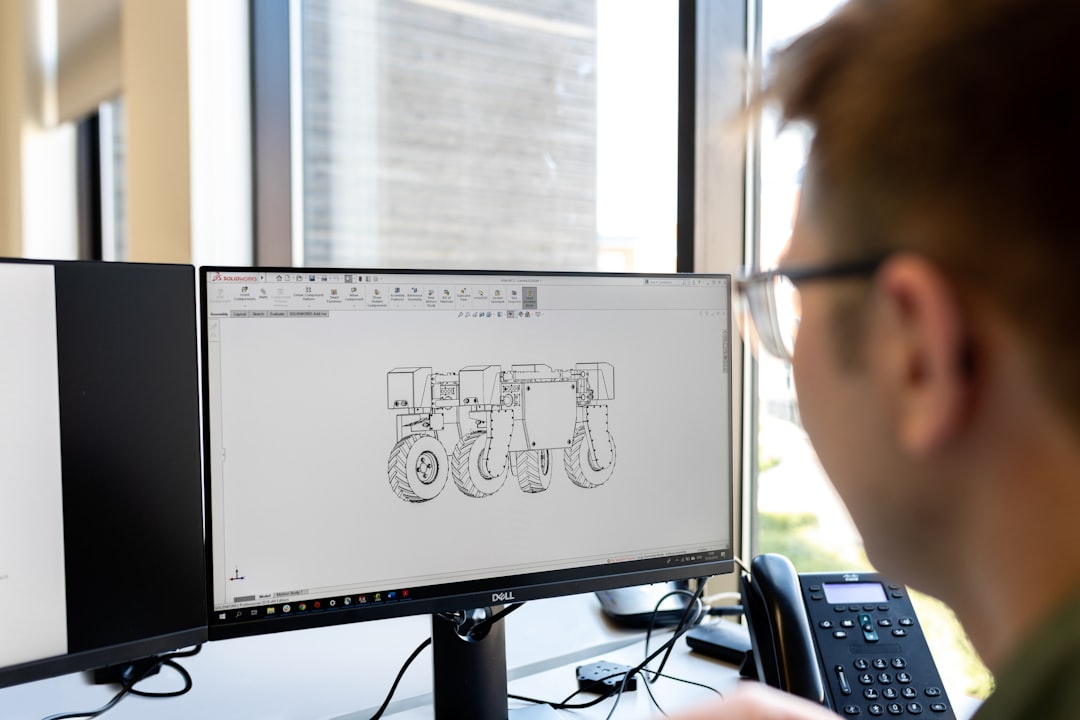Unlock encrypted content
Please enter your SSCE key to initiate on-the-fly decryption.
Decryption key: (Click cancel if you don't have the key)
Copied link to clipboard.
This feature is unavailable for free accounts. Upgrade now and enjoy all Premium benefits.
Go Premium!
This feature is unavailable for free accounts. Upgrade now and enjoy all Premium benefits.
Go Premium!
Please open this page in browser ( Google Chrome or Safari ) to use this feature.
Open In Browser
Streamlined File Sharing Workflows: The Future of Cloud Storage and Technology Integration.
Random related video for this blog.
Copied share link to clipboard.
In an increasingly digital world, the need for streamlined file sharing workflows is more critical than ever. This necessity encompasses various technological advancements, including electric vehicles, mobile app integration, and spatial computing. As businesses and individuals continue to rely on digital platforms for their operations, understanding how these elements converge is essential for maximizing efficiency and security in file management.
Understanding File Sharing Workflows
File sharing workflows are the processes by which digital documents and data are exchanged between users or systems. In today's fast-paced environment, the need for speed and efficiency is paramount. Companies are adopting streamlined file sharing workflows to minimize delays and enhance productivity. This shift is particularly evident in industries such as remote work, education, and healthcare, where timely access to information can significantly impact outcomes. One prominent example of this trend is the integration of mobile applications that facilitate seamless file sharing. For instance, businesses can utilize mobile apps that allow employees to access, edit, and share files on-the-go, irrespective of their location. This capability is crucial for organizations with remote teams, as it ensures that all members can collaborate effectively regardless of geographical barriers. Furthermore, mobile app integration with existing cloud storage solutions enhances file accessibility and redundancy, reducing the risk of data loss. Moreover, the emergence of spatial computing technologies—such as augmented reality (AR) and virtual reality (VR)—is set to revolutionize file sharing workflows. These technologies enable users to visualize and interact with data in a three-dimensional space, enhancing comprehension and collaboration. For instance, in design and architecture, teams can leverage spatial computing to share and modify files in real-time, leading to more efficient project execution and a reduction in errors.The Role of Cloud Storage Providers
Cloud storage providers play a pivotal role in facilitating streamlined file sharing workflows. With the abilityto store vast amounts of data securely, these platforms offer the necessary infrastructure for businesses to operate efficiently. FileLu, for example, offers premium plans ranging from 128 GB to 500 TB, allowing users to choose a plan that best suits their needs. The flexibility of cloud storage solutions means that businesses can scale their storage capacity as they grow, ensuring that they never run out of space for critical files. Additionally, the importance of file redundancy cannot be overstated. Cloud storage providers implement measures that ensure data is backed up across multiple locations, significantly reducing the risk of data loss due to hardware failures or cyber threats. FileLu, in particular, prioritizes data integrity by offering secure file storage backup options, which include SSL protection and encryption at their data centers. This commitment to security is vital in an era where data breaches are increasingly common. Furthermore, the capabilities of cloud storage providers extend beyond mere file storage. Many services offer advanced file sharing capabilities that allow users to send large files, collaborate in real-time, and access files from any device. For instance, FileLu enables users to send files up to 10 GB for free, with no file size limit on premium plans. This flexibility allows for efficient sharing of large media files, which is particularly beneficial in industries such as film, design, and marketing.
Integrating Emerging Technologies
The integration of emerging technologies such as drone technology, electric vehicles, and spatial computing into file sharing workflows is transforming how businesses operate. Drones, for instance, can be utilized for real-time data collection and transmission, enabling teams to share critical information instantly. In agriculture, for example, drones equipped with cameras collect data on crop health and soil conditions, which can be shared with agronomists for immediate analysis and decision-making. Electric vehicles also play a role in enhancing file sharing workflows, particularly in logistics and delivery sectors. With the rise of smart delivery systems, companies can track shipments in real-time and share this information with clients and partners. This transparency not only improves customer satisfaction but also streamlines communication and collaboration across supply chains. Spatial computing further enhances these workflows by allowing teams to interact with data in immersive environments. For example, construction companies can utilize AR to overlay digital models onto physical sites, facilitating real-time collaboration and reducing errors in project execution. This integration of technology not only streamlines workflows but also fosters innovation and creativity within teams.The Importance of File Backup and Redundancy
In the realm of digital file sharing, the importance of file backup and redundancy cannot be understated. The loss of critical documents can have devastating consequences for businesses, leading to operational disruptions and financial losses. To mitigate these risks, organizations must implement robust file backup strategies that ensure data is continuously protected. FileLu offers various solutions for file backup, prioritizing user security and data integrity. Their SSL protection and Secure-Solo-Cipher Encryption (SSCE) provide an added layer of security, ensuring that sensitive information remains confidential. This focus on security is particularly relevant for industries that handle sensitive data, such as healthcare and finance, where compliance with regulations is paramount. Moreover, the concept of file redundancy extends beyond mere backup. It involves creating multiple copies of files across different locations to ensure accessibility in the event of a system failure. By leveraging cloud storage providers like FileLu, organizations can achieve a high level of redundancy, significantly reducing the risk of data loss and ensuring that files are always accessible when needed.Practical Insights for Effective File Management
To effectively manage file sharing workflows, organizations must adopt best practices that enhance efficiency and security. One key strategy is to implement a centralized file management system that allows for easy access and organization of documents. This system should integrate seamlessly with existing tools and platforms, ensuring that all team members can collaborate effectively. Another essential practice is to regularly review and update file sharing protocols. As technology evolves, so do the risks associated with file sharing. Organizations must stay informed about the latest security threats and implement measures to protect their data. This includes training employees on best practices for file sharing and ensuring that they understand the importance of using secure platforms. Additionally, leveraging analytics can provide valuable insights into file sharing behaviors within an organization. By tracking which files are accessed most frequently and understanding user interactions, businesses can optimize their file management processes and enhance collaboration. This data-driven approach allows organizations to continually refine their workflows, ensuring that they remain efficient and secure.Conclusion
In conclusion, the future of file sharing workflows is undoubtedly intertwined with technological advancements and cloud storage solutions. As businesses continue to navigate the complexities of a digital landscape, the integration of electric vehicles, mobile app capabilities, and spatial computing will play a significant role in enhancing efficiency and security. By prioritizing file backup, redundancy, and adopting best practices, organizations can ensure that their file sharing processes are streamlined and effective. The emergence of innovative technologies and the increasing reliance on cloud storage providers like FileLu are shaping the way we manage and share files. As we move forward, embracing these changes will be crucial in staying competitive and ensuring the safety of our data.Frequently Asked Questions (FAQs)
Question: What are streamlined file sharing workflows? Answer:
Streamlined file sharing workflows refer to efficient processes for exchanging digital documents and data.
Question: Why is file backup important? Answer:
File backup is crucial to prevent data loss and ensure critical documents are recoverable in emergencies.
Question: How does cloud storage enhance file accessibility? Answer:
Cloud storage allows users to access files from any device and location, improving collaboration and efficiency.
By Amelia Isabella
Email: [email protected]
Related
Advanced Uploading Tools: Enhancing File Transfer Efficiency in the Digital...
July 31, 2023
Read More
Genetic Engineering, Cloud Infrastructure, and Bioprinting: The Future of Data...
July 31, 2023
Read More
Mind Uploading: Exploring Technological Advancements and Secure Document Collaboration
August 1, 2023
Read More
Popular
The Future of Technology: Exploring Biohacking, Space Tourism, and Digital...
November 23, 2025
Read More
Exploring the Benefits of Cloud Storage and Innovative Technologies in...
November 26, 2025
Read More
The Future of Digital Transformation: Exploring Smart Homes, Efficient File...
November 30, 2025
Read More
Latest
The Future of Digital Transformation: Exploring Smart Homes, Efficient File...
November 30, 2025
Read More
Exploring the Benefits of Cloud Storage and Innovative Technologies in...
November 26, 2025
Read More
The Future of Technology: Exploring Biohacking, Space Tourism, and Digital...
November 23, 2025
Read More
The Future of File Sharing: Streamlined Workflows for Photographers and...
November 19, 2025
Read More
Exploring the Intersection of Technology: From Cybersecurity to Augmented Reality...
November 16, 2025
Read More
The Future of File Management: Embracing Edge Computing and Efficient...
November 12, 2025
Read More
The Future of File Sharing: Exploring User-Friendly Solutions and Data...
November 5, 2025
Read More
The Future of Cloud Storage: How FileLu Empowers Creative Professionals...
November 2, 2025
Read More
The Future of Autonomous Technologies: Innovations in Robotics, File Sharing,...
October 29, 2025
Read More
Emerging Technologies Revolutionizing File Management: From Li-Fi to Robust Collaboration...
October 26, 2025
Read More
Emerging Technologies: Exploring the Impact of File Access Auditing, Genetic...
October 19, 2025
Read More
The Future of Data Storage: Exploring Advanced Encryption, Mobile Integration,...
October 5, 2025
Read More
Exploring the Future of Data Management: Security, Efficiency, and Cognitive...
September 28, 2025
Read More
Revolutionizing Data Management: Innovations in Storage, Security, and Sustainable Technology.
September 24, 2025
Read More























